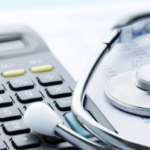My name is Constance Kawelenga and I am a registered Chartered Accountant and Auditor, and today we’re going to talk about the expenses that you can claim for income tax purposes as a medical practitioner.
Anyone who runs a business inevitably has to manage the tension between the desire to show healthy profits in their business with the desire to pay as little tax as possible.
Medical practitioners usually have minimal expenditure that they can claim through their businesses, as their greatest asset is their skill and intellect. Usually, overheads and expensive equipment are owned by the hospitals that the doctors are affiliated to.
And as we know, any prescribed medications are purchased by the patients themselves, either in cash or via their medical aid. For that reason, the medical practitioner will often have limited costs such as rent, communication, software costs, and payroll.
Business Versus Personal in Nature
In many instances, particularly in the case of sole practitioners, certain types of expenses straddle across the border between “personal” and “business” use. This includes, for instance, vehicle, telephone or cell phone costs.
These costs are often hard to separate in terms of business or personal use. When it comes to telephone and cell phone costs, if the business-related costs are at least 51% and the owner can prove so, then the business is allowed to bear the full invoice cost.
With regards to motor vehicle costs however SARS has prescribed a fringe benefit rule and it is important for business owners to understand these rules.
Vehicle ownership
We will discuss three options regarding ownership of a vehicle:
- The vehicle is owned and registered in the name of the company (fringe benefit);
- The vehicle is owned and registered in the name of the tax payer (Individual) and the company pays the individual a fixed travel allowance; and
- The vehicle is owned and registered in the name of the tax payer (Individual) and the company pays the individual a reimbursive allowance for expenses incurred.
Below we look at each of these options.
Vehicle owned and registered in the name of the company
When a vehicle is owned by the company and used by the tax payer for both business and personal use, it gives rise to a Fringe benefit with respect to personal use of the vehicle and this is a taxable benefit meaning it has to be included in the tax payers’ gross income.
However, employees may be entitled to claim a reduction on the fringe benefit in respect of business mileage travelled. In order to claim such a deduction, an accurate record of mileage travelled is required. This record is maintained in a logbook.
The value of the fringe benefit is calculated according to Paragraph 7(4) of the Seventh Schedule and can be divided into three parts:
- Employer-owned or leased vehicle with no maintenance plan – In this instance the amount of benefit is 3.5% of the determined value of the motor vehicle.
- Employer-owned or leased vehicle with a maintenance plan – In this instance the amount of benefit is 3,25% of the determined value of the motor vehicle.
- Vehicles held by the employer under an “operating lease” with a non-connected lessor – In this case the fringe benefit is the actual cost incurred by the employer, under the operating lease plus the cost of fuel in respect of the vehicle.
The value of the fringe benefit can be reduced on assessment where accurate records have been kept in respect to distances travelled for business purposes as a ratio that the business mileage bears to the total distance travelled during the year of assessment.
The value can further be reduced by costs such as license fees, insurance or maintenance, which the employee paid during the year of assessment. These costs are limited to the ratio that represents the business kilometres.
Where the vehicle is owned by the tax payer and the company pays a travel allowance
A travel allowance is any advance granted or an allowance paid to the employee by the employer, for the use of his/her private vehicle for the employer’s business purpose.
As from 01 March 2018 the travel allowance is based on actual distance travelled. The travel allowance can either be a fixed amount paid monthly or a reimbursive allowance paid for actual costs incurred.
A fixed travel allowance is an allowance which is given as a fixed amount to an employee towards travelling expenses for business purposes. These amounts are normally paid as part of the employee’s remuneration package.
A travel expense deduction is granted on a travel allowance for business travel expenditure and can be determined Using actual figures.
The taxpayer can provide actual business expenditure figures which are acceptable to the Tax Commissioner and to do so, the taxpayer would have to keep a detailed record of all business expenditure;
It is important to note that travel between your home and place of work cannot be claimed and is regarded as private travel.
In order to claim a deduction, the first step is to record your vehicle’s odometer reading on 1 March each year (the first day of the tax year for individuals), and again on the last day of February the following year (the last day of the tax year for individuals).
The difference between the closing and opening readings will give you your total kilometres travelled for the year. Without these readings, you cannot claim a tax deduction.
Once you have taken down these readings and worked out your total travel for the year, you can start calculating your travel deduction.
First you need to calculate what portion of the total kilometres travelled was for business use. It is compulsory to keep a logbook of all your travel in which you record your business kilometres if you want to claim a travel deduction. The logbook must contain date of travel, Kilometres travelled, Travel details (where to and reason for a trip).
The tax implications for both the Right of Use of a car (In the case of a Fringe Benefit as discussed earlier) and fixed travel allowance are the same. 80% of the allowance paid and/or taxable benefit to an employee will be subject to employees’ tax (PAYE).
Where the employer is satisfied that 80% of the use of a car for a year of assessment will be for business purposes, then only 20% of the allowance or benefit is subject to the employee’s tax.
Below we briefly mention some recommended apps that may be helpful in tracking mileage. We have not used these apps so we do not have an opinion on their suitability for you, but you can take a look at them and determine the one you may be more comfortable with. You may be able to choose any of these apps: Connecteam App, Everlance App and Mileage.
Reimbursive travel allowance
Reimbursive travel allowance is when the employer pays back the employees for the expenses they incur while travelling for business.
A reimbursive allowance or advance is based on actual business kilometres already travelled by the recipient and it is paid out at the employer-agreed rate per kilometre.
Two requirements should be met:
- The allowance is based on actual distance travelled for business
- No other travel allowance or reimbursement is payable by employer to employee.
If the taxpayer does not have proof of actual expenditure incurred, a deemed cost of R4.64 per km (for the year starting 1 March 2023) can be used. A new rate is published every year.
Other Costs Paid on Behalf of Employees or the Medical Practitioner
Medical Aid
In terms of Section 6A of the Seventh Schedule, a taxable benefit is deemed to have been granted when the employer contributes directly or indirectly to a medical scheme on behalf of an employee and his/her dependents.
Similarly, an employee is deemed to have been granted a taxable benefit by his/her employer if the employer has made contributions or paid any amount to the pension or provident fund on behalf of the employee e Insurance payments
Insurance
Business-related insurance payments are deductible. However, personal insurance costs or premiums, such as insurance cover for sickness, hospitalization and incapacity cover, are not tax deductible. The plus side is that the proceeds paid under these income protection policies are in most cases paid out tax free.
Home Office Expenses
Working from home can save you travel time and overhead costs. In addition, SARS allows you to claim a pro-rata portion of home expenses, such as insurance costs, water, rates and electricity, repairs and maintenance, home telephone account (if business use is greater than 50%), cleaning costs, as well as mortgage bond interest.
It is important, however, to familiarise oneself with the criteria for a home office that qualifies for such deductions, as SARS is quite prescriptive in this regard.
You should also be aware that claiming home office expenses on your primary residence means you lose out on a portion of your exclusion from paying Capital Gains Tax, should you sell that primary residence. Therefore, this is a “proceed with caution” area of tax planning that needs the advice of a tax expert.





